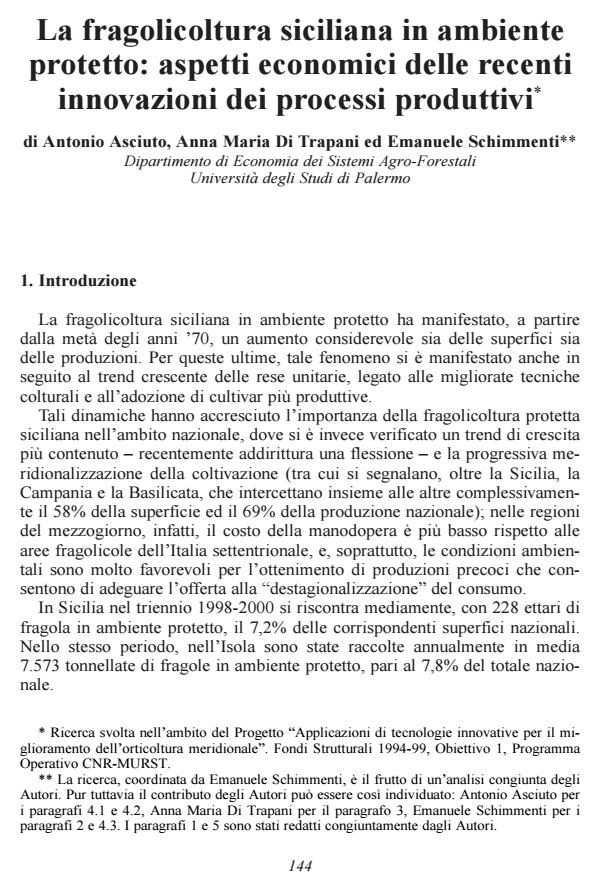La fragolicoltura siciliana in ambiente protetto: aspetti economici delle recenti innovazioni dei processi produttivi
Titolo Rivista ECONOMIA AGRO-ALIMENTARE
Autori/Curatori Emanuele Schimmenti, Anna Maria Di Trapani, Antonio Asciuto
Anno di pubblicazione 2002 Fascicolo 2002/1
Lingua Italiano Numero pagine 34 P. 144-177 Dimensione file 173 KB
DOI
Il DOI è il codice a barre della proprietà intellettuale: per saperne di più
clicca qui
Qui sotto puoi vedere in anteprima la prima pagina di questo articolo.
Se questo articolo ti interessa, lo puoi acquistare (e scaricare in formato pdf) seguendo le facili indicazioni per acquistare il download credit. Acquista Download Credits per scaricare questo Articolo in formato PDF

FrancoAngeli è membro della Publishers International Linking Association, Inc (PILA)associazione indipendente e non profit per facilitare (attraverso i servizi tecnologici implementati da CrossRef.org) l’accesso degli studiosi ai contenuti digitali nelle pubblicazioni professionali e scientifiche
La fragolicoltura siciliana in ambiente protetto: aspetti economici delle recenti innovazioni dei processi produttivi (di Antonio Asciuto, Anna Maria Di Trapani, Emanuele Schimmenti) - ABSTRACT: The protected cultivation of both large fruit and small fruit strawberries in Sicily, mainly concentrated in western Sicily, has been recently characterized by an increasing use of product and process innovations, strengthening the leadership of this area in the context of Italian early strawberry cultivation. The aim of the paper is to improve the knowledge of Sicilian protected strawberry sector, with reference both to its territorial features and to farm management. The investigated area is the province of Trapani (and particularly in Marsala district) for the important role it plays in the regional strawberry sector, accounting for about 7% of the relative national area. A microeconomic analysis, the aim of which was mainly to determine profitability of large and small fruit strawberry cultivations by means of various economic indicators, was carried out on a sample of 22 farms, where the following crop typologies were sorted out: one-year and two-year under tunnel cultivations of both frigo and fresh large fruit strawberry plants, one-year and two-year glasshouse soilless cultivations of frigo small fruit strawberry plants. The cropping techniques generally adopted in the farm sample are characterized by high manual labour inputs, as most cropping operations are quite difficult to mechanize. In order to identify the labour constraints affecting the potential expansion of strawberry enterprises, the annual farm working requirements of the different cultivations were analysed, as well as their temporal distribution. Moreover, harvest calendars have been reconstructed, as their width and positioning in the farming year are strategically important in relation to farm management and, above all, to the marketing stage. Microeconomic analysis has borne evidence of considerable profitability levels with regard to the studied typologies of large and small fruit strawberries, despite the fact that their production costs are rather high; the latter are actually more than offset by high values of the Gross Saleable Product per unit of cultivated area.
Emanuele Schimmenti, Anna Maria Di Trapani, Antonio Asciuto, La fragolicoltura siciliana in ambiente protetto: aspetti economici delle recenti innovazioni dei processi produttivi in "ECONOMIA AGRO-ALIMENTARE" 1/2002, pp 144-177, DOI: